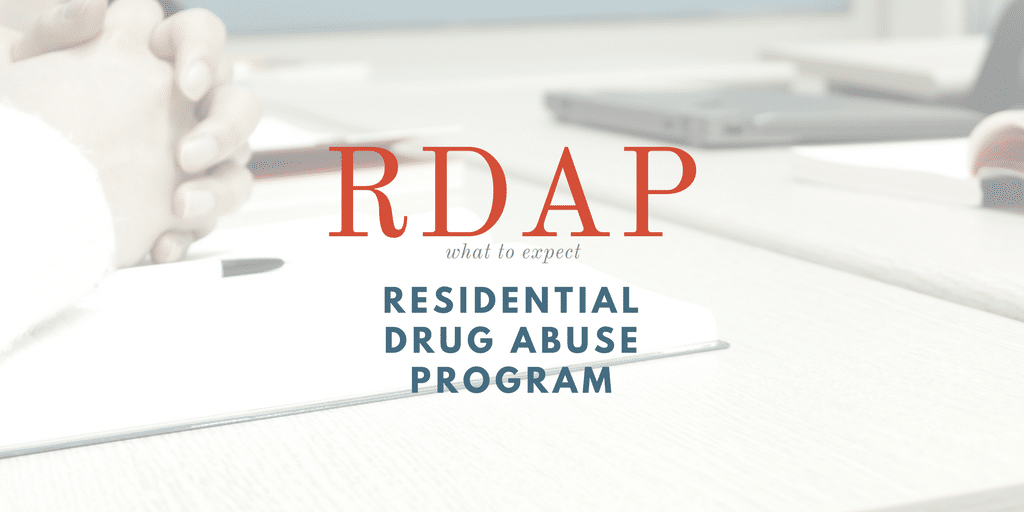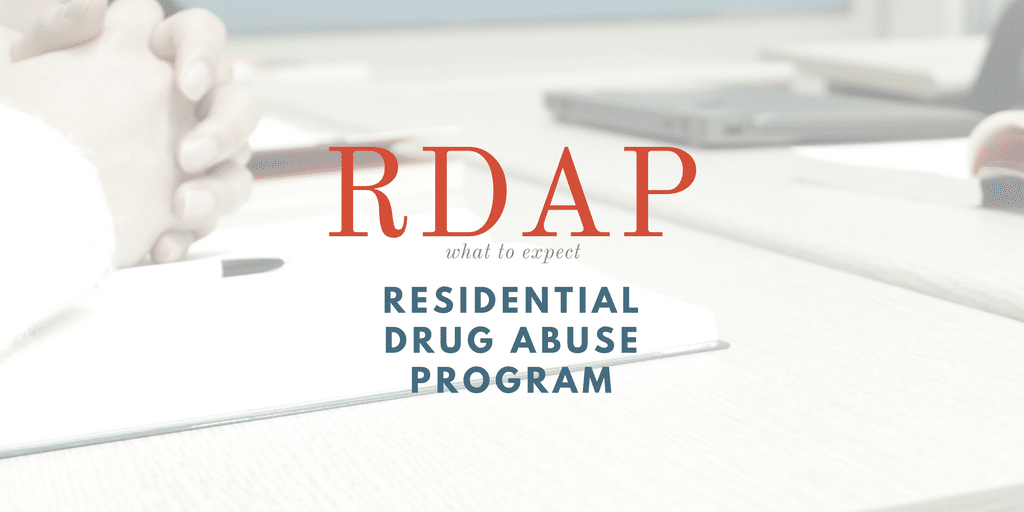Being convicted of a federal crime can be traumatic and going to prison can completely change a person’s life. Those who were convicted of a nonviolent federal crime and who have a verifiable drug abuse problem may qualify for entry into the Residential Drug Abuse Program (RDAP if they are within 24 months of their release date).
and going to prison can completely change a person’s life. Those who were convicted of a nonviolent federal crime and who have a verifiable drug abuse problem may qualify for entry into the Residential Drug Abuse Program (RDAP if they are within 24 months of their release date).
RDAP is authorized by 18 U.S.C. § 3621 and is designed to provide federal inmates with drug abuse education. The program is divided into three different parts:
- The unit-based component. It’s a voluntary, 500-hour drug abuse program that takes anywhere from 9 to 12 months to complete. The program consists of both individual and group therapy for federal inmates who struggle with a substance abuse disorder. It also includes many education courses.
- Follow-up services. This can also include staying in a halfway house. Most of the time, however, inmates will be reintroduced back into the general population and expected to participate in certain follow-up services that are offered at the prisons.
- Transitional drug abuse treatment (TDAT). This can last up to 6 months and is the final phase of the aftercare requirement.
Once RDAP inmates have completed RDAP, they will get a “certificate of achievement” placed in their central file. Other than having this certification on file, RDAP has a lot more to offer. Let’s take a look at some of the benefits of RDAP and why inmates who qualify for RDAP should highly consider applying for this program.
1. Reduced Sentencing
Those who successfully complete RDAP can receive a sentence reduction of up to one year. With that said, the amount of sentence reduction will vary from one individual to another.
Although some people are eligible for RDAP, they may not necessarily be eligible for a sentence reduction, so it’s important to get a good grasp of the eligibility and possible benefits before making a decision. For example, prisoners who aren’t eligible for placement in a halfway home or home confinement may not receive a sentence reduction.
2. Reduced Rate of Relapse
A large part of RDAP focuses on CBT therapy. Many inmates who complete these programs will have a better ability to handle their cravings and withdrawal symptoms. They’ll learn how to avoid triggers, like parties or friends that partake in the drug activity. Those who successfully complete RDAP will often have a much lower rate of relapse.
This also results in a reduced criminal activity once that individual is released. They are less likely to become victims of their own desires.
3. Drug Abuse Education
Education is key to bettering oneself, and the RDAP program will involve taking drug education courses that teach inmates about the ins and outs of drug abuse. They’ll learn how different drugs affect their body and the chemistry behind it.
Most importantly, they learn different therapy techniques and how to approach drug abuse as a whole. Education can also play a role in shaping moderation and informed decision making. This can easily tie in with a reduced rate of relapse.
4. Improved Health
RDAP focuses on healing the body and mind as well. Federal inmates learn how to better their health through exercise and other activities. The drug abuse treatment program can also help inmates as they go through withdrawals, so they don’t have to go at it alone!
Those who are able to kick their addiction will thrive once they return to society. They’ll usually be able to land better jobs and will have a brighter future!
5. Improved Relationships
If drugs were the culprit behind the behavior that led to a conviction, there’s a good chance that the offender also may have committed other acts that have resulted in a strained relationship with their family and friends. RDAP helps RDAP inmates reconnect with their loved ones and improve their relationships. This is a residential drug abuse treatment that heals not only the body and soul but also the mind.
Those who have better relationships are less likely to fall back into bad habits once they’ve been released. They’re also usually able to better communicate with their loved ones, so they have a stronger support system to fall back into should anything stressful emerge in their lives. They’re able to open up to those around them and talk to them about what they’re going through.
6. Separate Housing Units
Another important thing to note is that federal prisoners who participate in RDAP will usually live in units that are separate from the general population while they take part in half-day drug abuse treatment programs and half-day work, school, or vocational activities. For many inmates, living in separate units may actually feel more comfortable.
This may also reduce inmate misconduct, which can lengthen sentences by quite a bit. It’s much easier to want to improve for the better if you are surrounded by others who want the same thing. Those who join RDAP usually are on the same page and have a goal of improving the quality of their life.
If you or a loved one are facing federal charges and are interested in learning more about RDAP contact us today at 781-690-5077



